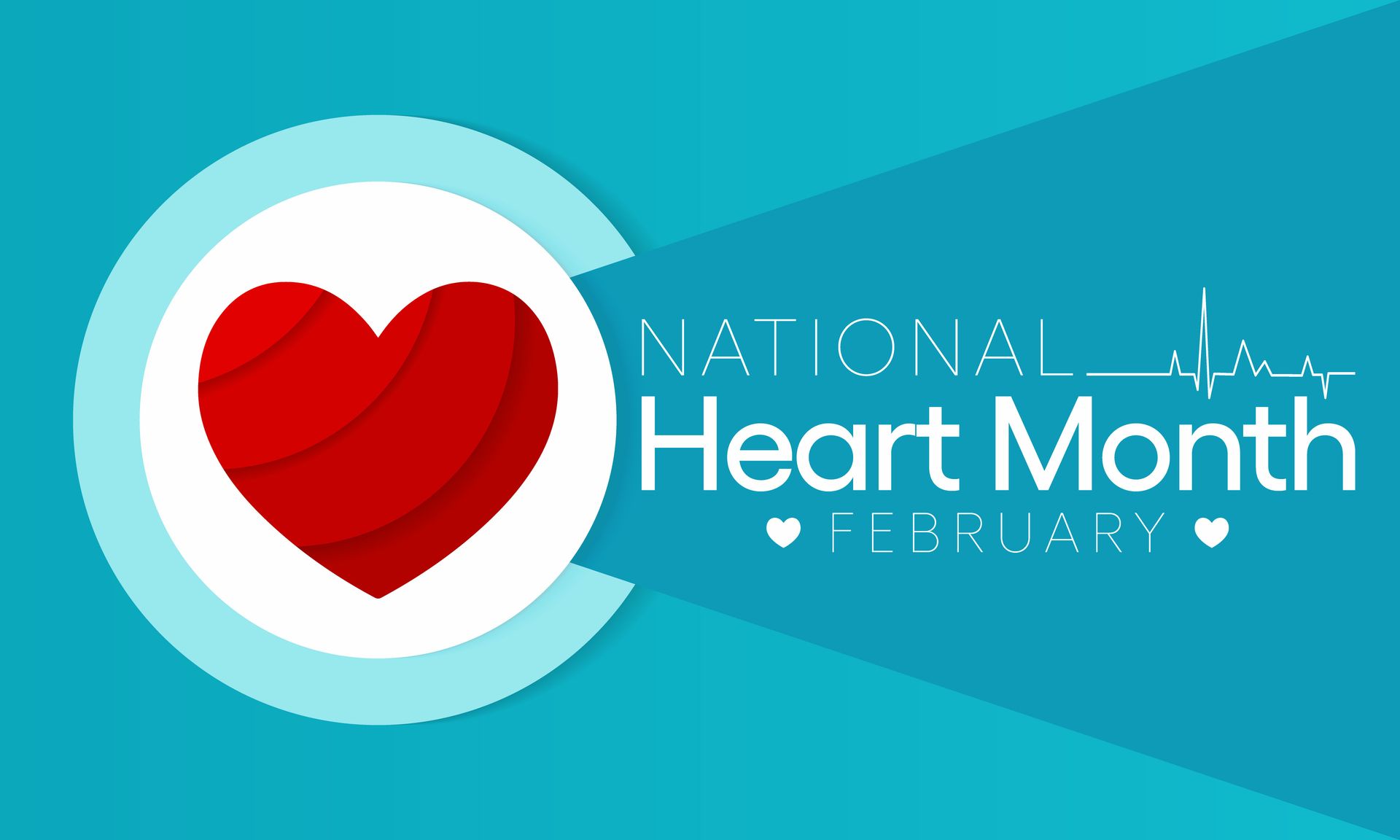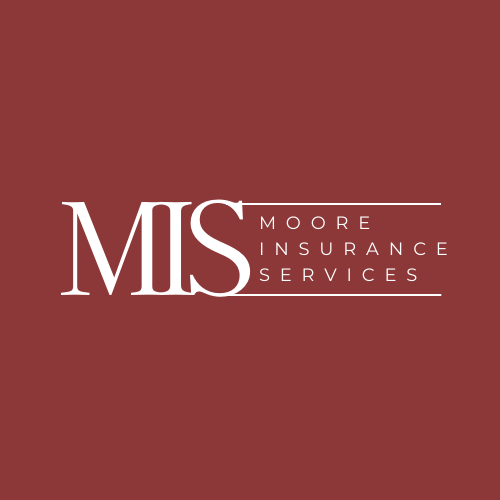Decoding Life Insurance Premiums: Understanding the Factors That Impact Your Costs
Life insurance is a vital part of financial planning for your future and the future of your loved ones. However, understanding the factors that impact the cost of your life insurance premiums can be a challenging and confusing task. There are many different factors that insurance companies consider when calculating your premiums, including your age, health, occupation, and lifestyle.
It is essential to understand how these factors can impact the cost of your life insurance and how you can control them to get the best possible rates for your coverage. In this post, we will decode life insurance premiums and explain the various factors that affect your costs, so you can make informed decisions about your life insurance policy.
Introduction to Life Insurance Premiums
Life insurance is a crucial financial tool that provides peace of mind and financial security for your loved ones in the event of your untimely demise. However, when it comes to purchasing a life insurance policy, one of the key considerations is the premium - the amount you need to pay regularly to keep the policy in force. Understanding life insurance premiums and the factors that impact them is essential for making informed decisions and ensuring that you are getting the coverage you need at a price you can afford.
Life insurance premiums are determined by various factors that assess the level of risk associated with insuring an individual. These factors include age, gender, health condition, occupation, lifestyle choices, and the desired coverage amount. Younger individuals generally have lower premiums as they are considered to be at a lower risk of facing health issues or death. On the other hand, older individuals or those with pre-existing medical conditions may have higher premiums as they pose a higher risk to the insurance company.
Gender also plays a role in determining premiums, as statistics show that women tend to live longer than men on average. Therefore, women often have lower premiums compared to men of the same age and health condition. Occupation and lifestyle choices are also taken into account, as certain professions or risky activities may increase the likelihood of accidents or health complications.
The desired coverage amount is another crucial factor in determining premiums. Generally, the higher the coverage amount, the higher the premiums will be. This is because the insurance company is taking on a greater financial risk by providing a larger payout in the event of a claim.
Age and Its Impact on Life Insurance Premiums
Age plays a significant role in determining life insurance premiums. As we age, the risk of developing health complications and mortality increases, which directly affects the cost of life insurance coverage. Insurance providers take this into account when calculating premiums to ensure they accurately reflect the potential risks associated with different age groups.
Younger individuals generally pay lower premiums since they are expected to have fewer health issues and a longer life expectancy. Insurance companies view them as lower-risk policyholders, as they typically have fewer pre-existing conditions and are less likely to make a claim in the near future. This translates into more affordable coverage options for the younger demographic.
On the other hand, as individuals advance in age, the cost of life insurance tends to increase. This is because insurers perceive older individuals as being more susceptible to health conditions and mortality, resulting in a higher likelihood of a claim being made. Additionally, certain age-related conditions, such as heart disease or diabetes, may become more prevalent, further contributing to the increased premiums.
It's important to note that the impact of age on life insurance premiums varies depending on the type of policy chosen. For term life insurance, where coverage is provided for a specific period, premiums are typically fixed for the duration of the policy. Therefore, securing coverage at a younger age can lead to long-term cost savings, as premiums will remain constant even as the insured individual ages.
In contrast, permanent life insurance, such as whole life or universal life, accumulates cash value and provides coverage throughout the insured's lifetime. Premiums for these policies are generally higher due to the extended coverage period and the potential for cash value growth. Age is a crucial factor in determining these premiums, as it directly influences the insurer's assessment of risk and the policyholder's expected lifespan.
Health and Lifestyle Factors That Affect Premium Rates
When it comes to life insurance premiums, many factors come into play. One of the most significant factors that insurers consider is your health and lifestyle. Insurance companies assess the risk associated with insuring an individual, and the healthier you are, the lower the risk they perceive.
Your current health condition plays a crucial role in determining your life insurance premiums. Insurers typically evaluate factors such as your body mass index (BMI), blood pressure, cholesterol levels, and any pre-existing medical conditions. Individuals with a healthy BMI, normal blood pressure, and optimal cholesterol levels are generally deemed lower risk and may qualify for more affordable premium rates.
Additionally, your lifestyle choices can significantly impact your life insurance premiums. Insurers take into account whether you smoke or use tobacco products, as these habits are associated with a higher risk of developing serious health conditions. Non-smokers often enjoy lower premium rates compared to smokers due to the reduced likelihood of health issues.
Moreover, your occupation and hobbies can also affect your life insurance premiums. Certain professions or activities, such as being a pilot or engaging in extreme sports, may be considered high-risk by insurers. These high-risk occupations and hobbies can lead to increased premiums as insurers perceive a greater chance of accidents or health complications.
The Role of Medical Exams in Determining Premiums
When it comes to life insurance, one of the key factors that impacts your costs is the role of medical exams. Insurance companies typically require applicants to undergo a medical examination as part of the underwriting process. This examination helps the insurer assess the applicant's health and determine the level of risk associated with insuring them.
During a medical exam, a licensed healthcare professional will conduct a series of tests and evaluations to gather information about your overall health. These tests may include measurements of your height, weight, blood pressure, as well as blood and urine samples. Additionally, the healthcare professional may inquire about your medical history, lifestyle choices, and any pre-existing conditions you may have.
The results of the medical exam are carefully analyzed by the insurance company's underwriters. Based on this information, they will assess the level of risk associated with insuring you. If you are found to be in good health with no significant pre-existing conditions, you may be deemed a low-risk applicant and qualify for lower premiums. On the other hand, if the medical exam reveals certain health issues or risky lifestyle choices, you may be considered a higher risk applicant and may consequently face higher premium costs.
Tips for Reducing Life Insurance Premiums and Finding Affordable Coverage
Life insurance is a critical aspect of financial planning, providing protection and peace of mind for your loved ones in the event of your passing. However, some individuals may be hesitant to invest in life insurance due to concerns about the cost of premiums. The good news is that there are several tips you can follow to reduce life insurance premiums and find affordable coverage that suits your needs.
One effective strategy is to maintain a healthy lifestyle. Insurance companies often take into account factors such as age, gender, and overall health when determining premium rates. By adopting a healthy lifestyle that includes regular exercise, a balanced diet, and avoiding harmful habits like smoking or excessive drinking, you can potentially lower your life insurance premiums.
Additionally, it's crucial to compare quotes from multiple insurance providers. Different companies have varying underwriting criteria and pricing structures, so obtaining quotes from several insurers can help you identify the most competitive rates available. Online comparison tools and working with an independent insurance agent can aid in this process, allowing you to evaluate different options and make an informed decision.
Furthermore, consider adjusting the policy term and coverage amount to align with your specific needs. Opting for a shorter policy term or a lower coverage amount can reduce your premiums. However, it's important to ensure that the chosen term and coverage still adequately protect your loved ones and meet your financial goals.
Another effective way to lower premiums is to bundle your life insurance policy with other insurance products, such as auto or home insurance. Many insurers offer discounts for bundling policies, providing an opportunity to save on overall premiums.
Lastly, improving your credit score can positively impact your life insurance rates. Insurance companies often consider credit history as a factor in determining premiums. By maintaining a good credit score and promptly addressing any credit issues, you can potentially secure more favorable rates.
Life insurance can be a complex topic, but by understanding the key factors that determine your premiums, you can make informed decisions that align with your budget and coverage needs. Remember, life insurance is an important investment in protecting your loved ones' financial future. With this knowledge, you can confidently navigate the world of life insurance and ensure you are getting the best coverage at the most reasonable costs. Stay protected and make the right choices for you and your family!

In today’s competitive job market, retaining top talent is more important—and more challenging—than ever before. While salary and traditional benefits form the foundation of employee satisfaction, supplemental benefits have emerged as powerful tools to deepen loyalty and boost overall happiness. From wellness programs and flexible work options to personalized perks that address individual needs, these additional offerings show employees that their well-being truly matters. What Are Supplemental Benefits? Supplemental benefits are additional perks and offerings provided by employers beyond the standard salary and basic health insurance. These benefits play a crucial role in enhancing employee satisfaction, well-being, and overall engagement. Examples of supplemental benefits include dental and vision insurance, mental health support, wellness programs, flexible work arrangements, childcare assistance, tuition reimbursement, and even financial planning services. By offering these extras, companies demonstrate that they value their employees’ diverse needs and are committed to supporting them both personally and professionally. In today’s competitive job market, supplemental benefits can be a decisive factor in attracting top talent and retaining your best employees for the long term. Common Types of Supplemental Benefits Supplemental benefits are additional perks offered by employers that go beyond the standard salary and basic health insurance. These benefits play a crucial role in enhancing employee satisfaction, boosting morale, and ultimately fostering loyalty within your workforce. Understanding the common types of supplemental benefits can help you tailor your offerings to meet the unique needs of your team. 1. One popular category is **health-related benefits**, which often include dental and vision insurance, mental health support, and wellness programs. These benefits demonstrate a commitment to the overall well-being of employees, making them feel valued and cared for. 2. Another common type is **financial benefits**, such as retirement plans with employer matching, student loan repayment assistance, and flexible spending accounts. These offerings provide employees with financial security and peace of mind, which can be a significant factor in long-term retention. 3. Employers also frequently offer **work-life balance benefits**, including flexible work hours, remote work options, paid parental leave, and generous vacation policies. These perks help employees manage their personal and professional lives more effectively, reducing burnout and increasing job satisfaction. 4. **Professional development benefits** like tuition reimbursement, training programs, and opportunities for career advancement show employees that their growth within the company is a priority, encouraging them to stay and invest in their futures with your organization. By incorporating a mix of these supplemental benefits, you create a supportive and engaging workplace environment that keeps your best employees happy and loyal for the long haul. In today’s competitive job market, unlocking employee loyalty is more important than ever, and offering thoughtful supplemental benefits can make all the difference. As we’ve explored, these benefits not only enhance your team’s overall well-being but also foster a deeper sense of appreciation and commitment. By investing in supplemental perks tailored to your employees’ needs, you create a workplace culture where your best talent feels valued, supported, and motivated to stay long-term. Remember, loyalty isn’t just earned through salaries but through meaningful benefits that show you genuinely care. Implementing these strategies will help you build a stronger, happier, and more dedicated workforce for years to come. Give us a call today and make an appointment with Frances to take a closer look at your supplemental benefit package and get the most out of your money!

Thinking about the future becomes really important as we grow older, but it’s true that talking about our healthcare choices and end-of-life wishes can feel challenging. The 5 Wishes document provides a warm and empowering way for seniors to share their personal, emotional, and medical preferences ahead of time. By clearly stating their wishes for medical care, comfort, spirituality, and how they want to be treated, seniors can make sure their voices are acknowledged and honored when it matters most. Today, we’ll dive into how the 5 Wishes document changes advance care planning by offering clarity, a sense of peace, and dignity for everyone involved seniors and their families. Key Components of the 5 Wishes Document The 5 Wishes document is a powerful and easy-to-understand tool that helps seniors take control of their future healthcare decisions. It goes beyond traditional advance directives by combining legal instructions with personal, emotional, and spiritual preferences, making it uniquely comprehensive. Here are the key components that make the 5 Wishes document so impactful: 1. **The Person You Want to Make Care Decisions for You When You Can’t** This section allows you to designate a trusted individual—often called a healthcare proxy or agent—who will speak and make decisions on your behalf if you become unable to do so. Choosing the right person ensures that your wishes are respected even when you cannot communicate them yourself. 2. **The Kind of Medical Treatment You Want or Don’t Want** Here, you can specify the types of medical interventions you do or do not want to receive, such as resuscitation, mechanical ventilation, tube feeding, or other life-sustaining treatments. This clarity helps avoid confusion and ensures your healthcare providers and loved ones understand your preferences. 3. **How Comfortable You Want to Be** This component addresses your comfort and pain management preferences, emphasizing the importance of dignity and quality of life. It allows you to express your wishes regarding pain relief, emotional support, and other comfort care measures. 4. **How You Want People to Treat You** Beyond medical care, this section focuses on the personal and emotional aspects of your care. It covers how you would like to be treated by caregivers, including respect for your privacy, the presence of loved ones, and emotional and spiritual support. 5. **What You Want Your Loved Ones to Know** The final component provides space for you to share your thoughts, feelings, and messages with family and friends. Whether it’s expressing forgiveness, love, or specific instructions about funeral arrangements, this section helps ensure your voice is heard and your legacy honored. Legal Validity and Accessibility of the 5 Wishes One of the most wonderful benefits of the 5 Wishes document is its strong legal standing in most states across the U.S., making it a reliable and accessible tool for advance care planning. Unlike some complex legal forms that can feel daunting to navigate, the 5 Wishes is specifically designed to be user-friendly, enabling seniors and their families to express their healthcare preferences clearly and without any confusing legal terminology. Currently recognized in nearly all states, this document satisfies the legal requirements for an advance directive, ensuring that a person’s wishes regarding medical treatment, comfort care, and personal matters are respected by healthcare providers and loved ones alike. Plus, its simple format gives seniors the confidence to take charge of their care decisions in a way that feels right for them, whether they complete it on their own, with help from caregivers, or alongside healthcare professionals. This wide recognition combined with its ease of use helps simplify advance care planning, encouraging more seniors to share their values and preferences ahead of any medical situations they might face. Step-by-Step Guide to Completing the 5 Wishes Completing the 5 Wishes document is a meaningful step toward ensuring that your healthcare preferences and personal wishes are respected. This simple yet powerful tool helps seniors communicate their desires clearly, giving peace of mind to both themselves and their loved ones. Here’s a step-by-step guide to help you navigate the process with confidence: Step 1: Obtain the Document Start by getting a copy of the 5 Wishes form. It’s widely available online for free, or you can request one from healthcare providers, senior centers, or local aging services organizations. Step 2: Review Each Wish Carefully The document is divided into five sections, or “wishes,” covering areas such as the person you want to make healthcare decisions for you, the kind of medical treatment you want or don’t want, comfort care, how you want to be treated, and what you want your loved ones to know. Take your time reading through each part to fully understand what it entails. Step 3: Reflect on Your Values and Preferences Consider your beliefs, values, and what matters most to you in your care. This reflection will help you make thoughtful choices that truly represent your wishes. Step 4: Fill Out the Form Write down your decisions clearly. The 5 Wishes form is designed in plain language, making it easy to complete without legal jargon. If you need assistance, don’t hesitate to ask a trusted family member, friend, or healthcare professional. Step 5: Sign and Date the Document Once completed, make sure to sign and date the form according to your state’s requirements. Some states require witnesses or notarization, so verify what's needed in your area. Step 6: Share Copies with Key People Distribute copies to your healthcare agent (the person you’ve designated to make decisions on your behalf), family members, your doctor, and anyone else involved in your care. This ensures that everyone is aware of your wishes. Step 7: Keep the Original in a Safe Place Store the original document somewhere accessible, such as with your important papers or in a medical information folder, so it can be easily located when needed. Step 8: Review and Update Periodically Life circumstances and preferences can change. Make it a habit to review your 5 Wishes document regularly and update it as necessary to reflect your current wishes. To wrap up, the 5 Wishes document is a wonderful tool that empowers seniors to take charge of their healthcare decisions and ensures their preferences are honored. By clearly outlining personal, medical, and emotional wishes, it offers peace of mind to seniors, their families, and caregivers alike. Embracing this caring approach to advance care planning encourages heartfelt conversations and strengthens the support network for our loved ones. If you or someone you care about hasn’t explored the 5 Wishes document yet, now is a fantastic time to begin—because planning with thoughtfulness today can truly make a difference tomorrow. If you are interested in learning more about "5 Wishes" give us a call! We would love to help you simplify your wishes.

As the population of aging seniors continues to grow worldwide, finding meaningful ways to support their well-being and quality of life has become more important than ever. Community empowerment offers a powerful approach to transforming the lives of older adults by fostering connection, independence, and a sense of purpose. When seniors are actively engaged and valued within their communities, they experience improved mental, emotional, and physical health, as well as greater social inclusion. In this blog post, we will explore how community empowerment initiatives create lasting positive impacts for aging seniors, highlighting inspiring examples and practical strategies that can help build stronger, more supportive environments for our elders. Introduction to Community Empowerment Community empowerment is a powerful approach that fosters active participation, collaboration, and shared decision-making among individuals within a community. When it comes to aging seniors, community empowerment plays a crucial role in enhancing their quality of life, promoting independence, and ensuring they remain valued and engaged members of society. Rather than viewing seniors solely as recipients of care, community empowerment encourages their involvement in shaping programs, services, and activities that directly impact their well-being. By creating supportive environments where seniors have a voice and access to resources, communities can help them maintain social connections, improve mental and physical health, and regain a sense of purpose and belonging. In this way, community empowerment serves as a catalyst for transforming the lives of aging seniors—turning challenges into opportunities for growth, dignity, and fulfillment. Understanding the Challenges Faced by Aging Seniors Aging seniors often encounter a unique set of challenges that can significantly impact their quality of life. Physical limitations such as decreased mobility, chronic health conditions, and sensory impairments can make day-to-day activities more difficult and increase feelings of dependence. Beyond the physical hurdles, many seniors face social isolation and loneliness, especially if they have lost close family members or friends or if their social networks have diminished over time. Cognitive decline and mental health issues such as depression and anxiety are also common concerns that can affect emotional well-being. Additionally, navigating complex healthcare systems, managing finances on fixed incomes, and adapting to new technologies can pose significant barriers. Understanding these multifaceted challenges is crucial in creating effective community empowerment initiatives that provide meaningful support, foster connection, and enhance the overall well-being of aging seniors. The Role of Social Connections in Senior Well-being Social connections play a vital role in the overall well-being of aging seniors, acting as a cornerstone for both mental and physical health. As individuals grow older, maintaining strong relationships with family, friends, and community members can significantly reduce feelings of loneliness and isolation, which are common challenges faced by many seniors. Engaging in regular social interactions helps to stimulate cognitive function, improve mood, and foster a sense of purpose and belonging. Community empowerment initiatives that encourage seniors to participate in group activities, clubs, or volunteer opportunities provide essential platforms for building and sustaining these social ties. Whether it’s joining a local gardening club, attending community center events, or simply sharing stories in a neighborhood gathering, these connections nurture emotional resilience and create support networks that seniors can rely on during difficult times. Moreover, social involvement often motivates seniors to stay physically active, contributing to better overall health. By prioritizing social connections within the community, we not only enhance the quality of life for aging seniors but also empower them to lead more fulfilling, independent, and joyful lives. Ultimately, fostering strong social bonds is a powerful way to transform the aging experience into one marked by engagement, vitality, and meaning. How Community Programs Foster Independence One of the most profound ways community programs empower aging seniors is by fostering a sense of independence. These programs are thoughtfully designed to provide seniors with opportunities to engage actively in their daily lives, encouraging self-reliance while offering the support they need. Through activities such as skill-building workshops, fitness classes tailored for different mobility levels, and social clubs, seniors gain not only practical abilities but also confidence in managing their own routines. Moreover, community programs often include resources like transportation services, meal deliveries, and health education that enable seniors to maintain their autonomy without feeling isolated. By participating in these programs, seniors can continue to make choices about their lives, from managing their health to pursuing hobbies and social connections. This empowerment reduces feelings of dependence and boosts mental and emotional well-being, ultimately enhancing their quality of life. In essence, community programs act as a bridge, connecting seniors to the tools and networks that support independent living. They create environments where aging individuals are valued, capable, and encouraged to lead fulfilling lives on their own terms. Examples of Successful Community Empowerment Initiatives Community empowerment initiatives have proven to be powerful catalysts for transforming the lives of aging seniors by fostering connection, independence, and purpose. One inspiring example is the “Village Model” movement, where neighborhoods come together to create support networks that enable seniors to age in place safely and comfortably. These villages coordinate services such as transportation, home repairs, social activities, and health resources, allowing seniors to maintain their autonomy while staying deeply engaged with their community. Another successful initiative is intergenerational programs, which bring together seniors and younger generations through shared activities like mentorship, arts, and technology workshops. These programs not only combat social isolation but also create meaningful bonds that enrich participants’ lives on both sides. For instance, the “Experience Corps” program engages seniors as tutors and mentors for children, providing a sense of purpose and boosting cognitive health. Additionally, many communities have launched senior-led advocacy groups that empower older adults to have a voice in local decision-making. Through these groups, seniors influence policies related to transportation, healthcare, and housing, ensuring their needs are met while fostering a sense of agency and community pride. These examples highlight how community empowerment initiatives can create supportive environments where aging seniors thrive emotionally, socially, and physically—ultimately transforming their quality of life. Enhancing Mental Health Through Community Engagement One of the most profound benefits of community empowerment for aging seniors lies in its positive impact on mental health. As seniors engage actively within their communities, they experience a renewed sense of purpose and belonging, which can significantly reduce feelings of loneliness and isolation—two common challenges faced in later life. Participating in group activities, volunteering, or simply socializing with peers stimulates cognitive functions and emotional well-being, helping to ward off depression and anxiety. Moreover, community engagement encourages seniors to share their rich experiences and wisdom, fostering intergenerational connections that enrich both their own lives and those of younger community members. These meaningful interactions create a supportive environment where seniors feel valued and understood, further boosting their self-esteem and resilience. By empowering seniors to take part in their communities, we not only enhance their mental health but also promote a vibrant, inclusive society where aging is embraced with dignity and joy. Promoting Physical Health and Active Lifestyles Promoting physical health and active lifestyles is a cornerstone of community empowerment for aging seniors. Staying physically active not only helps seniors maintain their mobility and independence but also significantly enhances their overall quality of life. Community programs that encourage regular exercise—such as group fitness classes, walking clubs, or gentle yoga sessions—provide seniors with enjoyable ways to stay active while fostering social connections. These activities help reduce the risk of chronic illnesses, improve balance and strength, and boost mental well-being by releasing endorphins and reducing feelings of isolation. Moreover, when communities create safe, accessible outdoor spaces like parks and walking trails, seniors are more likely to engage in regular physical activity. By promoting and supporting these active lifestyles, communities empower seniors to lead healthier, happier, and more fulfilling lives. The Impact of Volunteerism Among Seniors Volunteerism among seniors plays a transformative role not only in the communities they serve but also in the lives of the seniors themselves. Engaging in volunteer activities provides older adults with a renewed sense of purpose, social connection, and mental stimulation, all of which are essential components of healthy aging. When seniors contribute their time and skills to community projects, they often experience increased self-esteem and a strengthened sense of belonging. Moreover, volunteering can combat feelings of isolation and loneliness that many aging individuals face, fostering meaningful relationships and intergenerational bonds. Communities, in turn, benefit from the wealth of experience, wisdom, and dedication that senior volunteers bring. This reciprocal impact creates a positive cycle of empowerment, where seniors feel valued and motivated, and communities grow stronger and more inclusive. Ultimately, volunteerism is a powerful tool that enriches the aging experience, promoting well-being and enhancing quality of life for seniors across the globe. In conclusion, community empowerment is truly wonderful for transforming the lives of aging seniors! It helps foster a sense of belonging, purpose, and independence. When seniors are actively engaged and supported in their communities, they enjoy improved well-being, stronger social connections, and easier access to essential resources. By prioritizing inclusive programs and encouraging intergenerational collaboration, we can create warm environments where our elders not only thrive but also continue to share their valuable wisdom and experience. Embracing community empowerment isn't just a gift for seniors—it enriches our entire society, reminding us all of the beauty of connection and collective care throughout every stage of life!

In a world where the hustle and bustle of daily life often overshadows our well-being, it’s crucial to prioritize one of our most vital organs: the heart. With heart disease remaining a leading cause of health complications globally, understanding how to nurture and protect this essential organ is more important than ever. Fortunately, keeping your heart healthy doesn’t have to be an overwhelming task. These simple tips will make all the difference in your heart health. Eat a Heart-Healthy Diet Eating a heart-healthy diet is one of the most impactful steps you can take to safeguard your cardiovascular health. Imagine your plate filled with vibrant colors—deep greens, rich reds, sunny yellows—all representing a variety of nutrient-dense foods that work together to support your heart. A heart-healthy diet emphasizes whole foods that are low in saturated fats, cholesterol, and sodium while being high in fiber and essential nutrients. Stay Physically Active Staying physically active is one of the most crucial components of maintaining a healthy heart. Regular exercise not only strengthens the heart muscle but also improves circulation, lowers blood pressure, and helps manage weight—all vital factors in heart health. Engaging in physical activity doesn’t have to be a chore; in fact, it can be an enjoyable part of your daily routine. Maintain a Healthy Weight Maintaining a healthy weight is a cornerstone of heart health and plays a significant role in reducing the risk of heart disease. Carrying excess weight, particularly around your midsection, can put additional strain on your heart and elevate blood pressure, cholesterol levels, and blood sugar. Therefore, achieving and maintaining a healthy weight is not just about aesthetics; it’s about promoting overall well-being and longevity. Manage Stress Effectively Managing stress effectively is crucial for maintaining a healthy heart. In today’s fast-paced world, stress can seem inevitable, but how you respond to it can make all the difference. Chronic stress triggers a cascade of physiological responses in the body, including increased heart rate and elevated blood pressure, both of which can strain your cardiovascular system over time. Quit Smoking and Avoid Tobacco Quitting smoking and avoiding tobacco products is one of the most significant steps you can take in your journey towards a healthier heart. The dangers of tobacco use are well-documented, and the statistics are sobering. Smokers are twice as likely to suffer from heart disease compared to non-smokers, and the harmful chemicals found in cigarettes can damage blood vessels, reduce oxygen flow, and increase blood pressure—all of which contribute to cardiovascular problems. Importance of Sleep for Heart Health To promote heart health, aim for 7 to 9 hours of quality sleep each night. Create a peaceful sleep environment by keeping your bedroom cool, dark, and free from distractions like electronic devices. Consider incorporating relaxation techniques such as deep breathing or gentle stretching before bedtime to help ease your mind. Prioritizing heart health is a lifelong commitment that can lead to a happier, more vibrant life. By incorporating simple tips into your daily routine—ranging from balanced nutrition and regular exercise to managing stress and getting enough sleep—you can significantly reduce your risk of heart disease and enhance your overall well-being. Remember, small, consistent changes can make a big difference over time.

Short-term health insurance has often been seen as a flexible, budget-friendly solution for those in transitional phases, but recent reforms may alter its accessibility, benefits, and limitations. As we approach 2025, significant changes are on the horizon for short-term health insurance that could impact both policyholders and potential buyers. Understanding the fundamentals of these plans will be crucial as consumers navigate new regulations and options that may alter the landscape of temporary healthcare coverage. In this post, we will explore what short-term health insurance entails, the upcoming changes, and how these adjustments may affect your healthcare decisions in the near future. These plans typically offer coverage for a limited duration—often ranging from a few months up to a year—allowing consumers to tailor their health insurance needs according to their specific circumstances. While they can be an attractive choice due to lower premiums and quicker enrollment processes, it’s essential to note that short-term health insurance often comes with limitations. Coverage may be less extensive, excluding essential health benefits mandated by the Affordable Care Act, such as maternity care, mental health services, and pre-existing condition coverage. There are significant changes are on the horizon for short-term health insurance plans that could impact millions of consumers. Understanding these key changes is essential for individuals considering their health coverage options. First and foremost, the duration of short-term plans is set to change. Currently, many states allow these plans to last up to 12 months, with the option for renewal. However, starting in 2025, new regulations will likely limit the duration of coverage to just three months, with a potential extension to four months. This shift aims to encourage consumers to seek more comprehensive health insurance options rather than relying on short-term plans as a long-term solution. In addition, the new guidelines will introduce stricter requirements regarding the disclosure of coverage limitations. Short-term plans have often been criticized for their lack of transparency, with many consumers unaware of the exclusions and out-of-pocket costs associated with these policies. The upcoming changes will mandate insurers to provide clearer information about what is and isn’t covered, empowering consumers to make more informed decisions about their healthcare needs. Another significant alteration involves the incorporation of essential health benefits. Previously, short-term plans were not required to cover fundamental services such as hospitalization, prescription drugs, and preventive care. However, starting in 2025, there will be a push towards a more standardized approach, with some states expected to implement regulations that require short-term plans to include at least a subset of essential health benefits. This transition aims to bridge the gap between short-term insurance and more comprehensive policies, ultimately enhancing consumer protection. Finally, as telehealth services continue to gain popularity, expect to see changes in how these services are covered under short-term plans. Insurers may be encouraged to integrate telehealth options more fully, recognizing the growing demand for accessible healthcare solutions. This could enhance the overall value of short-term plans, making them more attractive to those who rely on virtual consultations for their medical needs. Understanding the Fine Print: What to Look For When navigating the landscape of short-term health insurance in 2025, understanding the fine print is crucial. Unlike traditional health insurance policies, short-term options often come with specific terms and conditions that can significantly impact your coverage. Here’s what to look for to ensure you’re fully informed before making a decision. First and foremost, pay attention to the duration of coverage. Short-term health insurance plans are designed to provide temporary relief, typically ranging from a few months to a year. However, some plans may impose limits on how long you can renew your coverage, which means you'll need to reassess your options as your needs evolve. Next, examine the exclusions and limitations section meticulously. Short-term plans often exclude coverage for pre-existing conditions, maternity care, and preventive services. Understanding these exclusions will help you set realistic expectations regarding what the plan will cover and will save you from surprise medical bills later on. Another critical aspect is the network of providers. Many short-term insurance plans operate with a limited network of doctors and hospitals. Investigate whether your current healthcare providers are in-network to avoid higher out-of-pocket costs. Additionally, familiarize yourself with the referral requirements, as some plans may necessitate referrals to see specialists. Lastly, scrutinize the costs associated with the plan. Beyond the monthly premium, look for hidden fees such as deductibles, coinsurance, and copayments. Understanding these costs upfront will allow you to budget effectively and prevent financial strain in the event of unexpected medical care. Ultimately, the goal is to ensure that you have the right coverage in place to protect yourself and your loved ones. As the health insurance landscape continues to evolve, staying proactive and well-informed will allow you to navigate the complexities of short-term health insurance confidently. In doing so, you’ll not only be prepared for 2025 but also for the years that follow, ensuring that your health and financial wellbeing remain secure in an ever-changing environment. Remember, a licensed agent is the best place to go to for help when looking into health insurance. Call our office anytime and talk to Frances, our individual health specialist to make sure you are getting the most out of your health insurance!

The 2025 cap on Part D prescription costs marks a significant shift in the landscape of Medicare coverage, aiming to provide much-needed relief to beneficiaries grappling with escalating medication expenses. Under this new policy, the out-of-pocket costs for prescription drugs will be limited to $2,000 annually. This means that once you reach this threshold, your prescription costs for the remainder of the year will be significantly reduced, offering a vital safety net for those who may have previously faced exorbitant bills. The cap encompasses all covered medications, ensuring that individuals on multiple prescriptions can benefit from this cost-control measure. This change is particularly important for seniors and individuals with chronic conditions who often rely on a regimen of medications to manage their health. In addition to the cap, the 2025 reforms also include provisions for improved access to lower-cost generic drugs and an expanded list of preventive services that are provided at no cost to beneficiaries. This not only emphasizes the importance of proactive health management but also aims to reduce the financial barriers that often prevent individuals from seeking necessary treatments. As we move towards 2025, it’s essential to understand how this cap will impact your healthcare budget and the overall sustainability of your prescription drug needs. By keeping abreast of these changes, you can better plan for your health expenses and make informed decisions about your medication options. The implementation of this cap represents a pivotal moment in healthcare policy, providing a clearer pathway for millions of Americans to access the medications they need without the looming threat of financial hardship. For the average Medicare beneficiary, this cap means a newfound sense of security. Those who rely on multiple prescriptions to manage chronic conditions often face overwhelming costs, especially if they fall into the "donut hole," where out-of-pocket expenses spike. With the cap in place, beneficiaries can confidently plan their budgets, knowing they will not exceed the $2,000 threshold. However, the cap also introduces some complexities that require attention. While the financial burden is eased, beneficiaries will need to be proactive in managing their prescriptions. It’s essential to stay informed about which medications are covered under Part D plans and how costs are structured throughout the year. Additionally, the cap encourages beneficiaries to engage with their healthcare providers and pharmacists to explore lower-cost alternatives or generics, potentially maximizing their savings even further. Moreover, the cap's implementation may lead to changes in plan offerings and pharmaceutical pricing strategies. Beneficiaries should keep an eye on how their current plans adapt to this new structure and be prepared to shop around during open enrollment periods to ensure they secure the best coverage for their needs. As we look ahead to 2025 and the implementation of the cap on Part D prescription costs, it’s clear that this change represents a significant shift in the landscape of healthcare affordability for many Americans. The anticipated cap aims to alleviate the financial burden on seniors and individuals with disabilities who have historically faced high out-of-pocket expenses for essential medications. Navigating this new terrain will require a proactive approach. It's crucial to stay informed about the specific details of the cap, including how it interacts with various plans, formulary changes, and potential cost variations. Understanding your options will empower you to make informed decisions about your healthcare needs. Moreover, it’s essential to engage with your healthcare providers and pharmacists, who can offer guidance tailored to your unique situation. They can help you navigate the complexities of your prescription coverage and suggest alternative medications or assistance programs if necessary. As we prepare for this transformative change, consider taking the time to review your current prescription plan and assess your medication needs. By doing so, you can ensure that you are not only ready for the upcoming cap but also positioned to maximize the benefits it offers. As always, if you have questions about your prescription drug coverage, or any of your other health coverages, we are always here to answer any questions.

As technology advances and the digital landscape evolves, so do the tactics used by scammers targeting vulnerable populations, particularly seniors. With their wealth of life experience and often hard-earned savings, older adults can become prime targets for deceitful schemes designed to exploit their trust and financial security. In a world where phone calls, emails, and online messages can easily disguise malicious intent, it’s crucial for seniors to arm themselves with knowledge and strategies to identify and thwart these threats. Understanding Common Scams Targeting Seniors Understanding common scams targeting seniors is the first line of defense in protecting yourself from financial fraud. Scammers often exploit the vulnerabilities and trust of older adults, using tactics that can seem benign at first glance. It’s crucial to be aware of the most prevalent types of scams so that you can recognize them and take action before falling victim. One of the most insidious scams is the "phishing" email, where fraudsters pose as credible organizations—like banks or government agencies—asking for personal information or urging recipients to click on a malicious link. These emails may look official, complete with logos and professional language, making it easy to mistake them for legitimate communications. Another common scam is the lottery or prize scam, where seniors are informed they’ve won a contest they never entered. The catch? They need to pay a fee or provide sensitive information to claim their prize. This tactic preys on the excitement of potential winnings, often leading victims to part with their money before realizing it’s a hoax. Romance scams have also become alarmingly prevalent, leveraging online dating platforms to build emotional connections with seniors. Scammers often create fake profiles, gaining trust over time before requesting money for emergencies or travel expenses, leaving victims heartbroken and financially devastated. Finally, there are scams that involve home repairs and services. Fraudsters may offer unsolicited services at exaggerated prices, often pressuring seniors into immediate payments for work that may never be completed or is poorly executed. Recognizing Red Flags: Warning Signs of Fraud In today’s increasingly digital world, scammers are becoming more sophisticated, employing tactics that can easily deceive even the most cautious individuals. For seniors, recognizing red flags is crucial in the fight against fraud. Here are some key warning signs to watch out for: **Unsolicited Contact:** Be wary of unexpected phone calls, emails, or messages from unfamiliar sources. Scammers often initiate contact, claiming to represent legitimate organizations or government agencies. If something feels off, trust your instincts and do not engage. **Too Good to Be True Offers:** If you receive an offer that seems too good to be true, it probably is. Whether it’s a promise of large sums of money for little effort, or incredible deals on products and services, these enticing pitches are often designed to lure you into a scam. **Pressure to Act Quickly:** Scammers often create a false sense of urgency to pressure their victims into making hasty decisions. Phrases like "limited time offer" or "act now to avoid consequences" are common tactics. Take a step back to assess the situation before responding. **Requests for Personal Information:** Legitimate organizations will never ask for sensitive information, such as Social Security numbers, bank account details, or passwords, via email or over the phone. If someone insists on this information, it’s a major red flag. **Unusual Payment Methods:** Be cautious if someone requests payment through wire transfers, gift cards, or cryptocurrency. These methods are often preferred by scammers because they are difficult to trace and recover. **Lack of Verifiable Information:** Scammers often provide vague details or refuse to give you their business name, phone number, or website. Always do your research and verify any claims before proceeding. **Emotional Manipulation:** Many scams exploit emotions, playing on feelings of fear, love, or greed. If someone is attempting to manipulate your emotions to get you to comply, take a step back and evaluate the situation logically. How to Respond if You Suspect a Scam If you find yourself in a situation where you suspect a scam, it's crucial to act swiftly and decisively. The first step is to trust your instincts; if something feels off, it probably is. Take a moment to gather your thoughts and assess the situation. Document any relevant details, such as the caller's name, the company they claim to represent, and the nature of the communication. Keeping a record can be invaluable if you need to report the incident later. Once you’ve assessed the situation, it’s time to take action. If the scam comes in the form of a phone call, hang up. Do not engage or provide any personal information. If it’s an email or text message, don’t click on any links or download attachments. Instead, consider reaching out to a trusted friend or family member for advice. They can provide support and help you evaluate the situation from a fresh perspective. Reporting the scam is another critical step. Contact your local consumer protection agency, the Federal Trade Commission (FTC), or your country’s equivalent organization to file a complaint. Providing them with as much information as possible helps them track scams and warn others in the community. Additionally, if you think you may have inadvertently shared personal information, contact your bank or credit card company immediately to alert them and take necessary precautions. They can help monitor your accounts for any suspicious activity and guide you on the next steps to secure your finances. Lastly, consider sharing your experience with others, whether through local community groups, social media, or family gatherings. Raising awareness about scams can empower others to protect themselves and create a network of vigilance within your community. Remember, staying informed and proactive is your best defense against scammers. Ultimately, taking control of one’s finances is about empowerment. By arming themselves with knowledge, utilizing available resources, and fostering a community of support, seniors can confidently navigate the financial landscape and outsmart scammers. Let this guide serve as a stepping stone to a more secure financial future, where seniors can enjoy their hard-earned savings without the shadow of fraud looming over them. Remember, awareness is the best defense, and every step taken towards financial literacy is a step towards peace of mind.

Medicare Advantage plans, also known as Medicare Part C, are offered by private insurance companies and provide an alternative to traditional Medicare. They are designed to offer more comprehensive coverage and benefits than traditional Medicare, but they also come with some additional costs and restrictions. Here are some factors to consider when deciding if a Medicare Advantage plan is right for you: 1. Your Health Care Needs: Medicare Advantage plans typically offer more comprehensive coverage than traditional Medicare, including coverage for things like dental, vision, hearing, and prescription drugs. If you have a lot of healthcare needs, a Medicare Advantage plan may be a good option for you. 2 . Your Budget: Medicare Advantage plans typically have higher premiums than traditional Medicare, but they may also offer lower out-of-pocket costs, such as deductibles, copayments, and coinsurance. You will need to compare the costs of different plans to see which one is right for you. 3 . Your Provider Network: M edicare Advantage plans typically have their own provider networks. If you have a doctor or specialist that you see regularly, you will need to make sure that they are in the plan's network. Otherwise, you may have to pay out-of-network fees. 4. Your Medication Needs: Medicare Advantage plans may have different formularies, which are the lists of covered drugs. If you take a lot of medications, you will need to make sure that your drugs are covered by the plan. Otherwise, you may have to pay higher costs for your medications. 5. Your Lifestyle and Preferences: Some Medicare Advantage plans offer additional benefits and features, such as gym memberships, transportation services, and telehealth visits. If these benefits are important to you, you may want to consider a Medicare Advantage plan that offers them. 6. Your Future Health Care Plans: If you think you may need long-term care in the future, you may want to consider a Medicare Advantage plan that offers long-term care coverage. This type of coverage can help you pay for nursing home care, assisted living, or other long-term care services. If you are considering a Medicare Advantage plan, you should talk to your doctor, a Medicare insurance agent, and your family to get more information and to help you choose the plan that is right for you. If you have questions or would like to explore your options, give us a call !

Acquiring long-term care insurance may seem unnecessary for young adults, but it can truly be a valuable consideration. Here's why: Lower Premiums : When you're young and in good health, premiums are considerably lower. Locking in these rates now shields you from potential future increases, which can be substantial. Guaranteed Coverage : Obtaining coverage while in good health protects you from the risk of developing a chronic illness or disability that could hinder your ability to secure coverage in the future. Planning for the Future : Accidents or illness can result in long-term care needs at any age. Having a plan in place ensures you have the necessary resources without burdening your loved ones financially. Preserving Assets : The cost of long-term care can easily exceed $100,000 per year. Investing in insurance provides coverage for these expenses, preserving your assets and securing your financial stability in retirement. Protecting Your Family : Having insurance relieves your loved ones of the emotional and financial burden of caring for you, allowing them to focus on supporting you. Peace of Mind : Knowing you have a long-term care plan gives you peace of mind, as you have prepared for the future and safeguarded your family. While it may seem far-fetched to consider long-term care as a young adult, the truth is that many Americans will eventually require such services. With life expectancy on the rise, the potential duration of care needs also increases. By investing in long-term care insurance early on, you can ensure your financial future and have the means to maintain your independence and well-being. Remember, there is no definite age limit for purchasing long-term care insurance, but securing it while young offers significant advantages in terms of cost and guaranteed coverage. If you would like to see if Long Term Care Insurance is an affordable options for you, give us a call !

Financial planning and life insurance are crucial for achieving financial security and building generational wealth. Understanding your personal and financial needs is essential before making any financial decisions. There are various reasons for getting life insurance, including debt coverage, family protection, final expenses, investment purposes, and business purposes. Discussing your and your family's goals will guide you in choosing the right life insurance policy. There are two main types of life insurance: term life insurance and permanent life insurance. Term life insurance provides coverage for a specified period, while permanent life insurance offers lifelong coverage and potential cash value accumulation. You can employ various hacks to maximize the value of your insurance, such as choosing term life insurance to save money, leveraging permanent life insurance for potential cash value, combining term and permanent policies for balanced coverage, and staggering multiple term policies to match different life stages. Regularly reviewing and updating your life insurance policies is crucial to ensure they align with your evolving needs. You can adjust policies based on life changes, reduce premiums by improving your health, and secure a policy while young to lock in lower rates. Adding riders, such as disability waiver of premium and accelerated death benefit riders, can enhance your policy's coverage. Working with an independent agent can provide a broader range of options and potentially better rates. Additionally, you can use group life insurance as supplementary coverage and maximize the cash value component of permanent life insurance through strategic planning. By implementing these hacks, you can optimize your life insurance coverage and better protect your family's financial future. If you are wondering how Life Insurance can go to work for you, give us a call !

